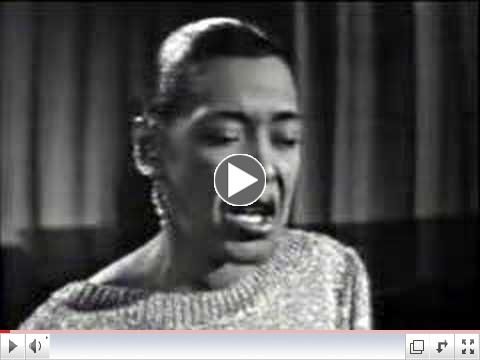 | | Billie Holiday - Strange Fruit |
|

NEW CCDS Pamphlet
on Climate Change.
|
Blog of the Week...

|

New CCDS Book Reporting on Vietnam
|
|
Radical Jesus:
A Graphic History of Faith 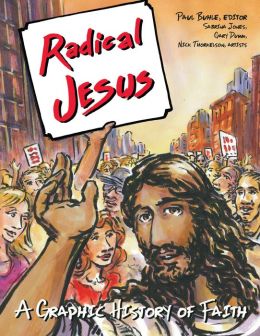 By Paul BuhleHerald Press By Paul BuhleHerald Press
|

Want to Know what CCDS has
been doing...Check it Out!
|
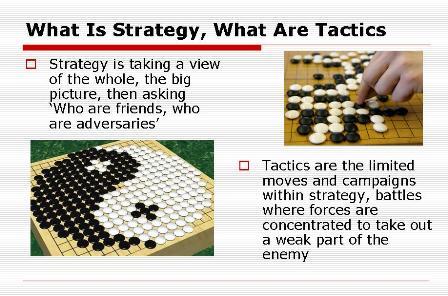 Keep On Keepin' On Keep On Keepin' OnHating the 'Middle Class,' Why Socialists Run in Elections, Strategy and Tactics Slide Slow, Class and Privilege, the Green New Deal ...and other Short Posts on Tumblr by Carl Davidson
|

Edited by Carl Davidson Revolutionary Youth and the New Working Class: The Praxis Papers, the Port Authority Statement, the RYM Documents and other Lost Writings of SDS Changemaker, 273pp, $22.50
For the full contents, click the link and view 'Preview' under the cover graphic.
|
 The new annual edition of our journal of discussion and analysis is now out. More than 170 pages, it includes 14 articles on strategy austerity, organizing, and the right. Cost is $10 plus shipping. Or get one by becoming a sustainer. Click the title to buy it directly. The new annual edition of our journal of discussion and analysis is now out. More than 170 pages, it includes 14 articles on strategy austerity, organizing, and the right. Cost is $10 plus shipping. Or get one by becoming a sustainer. Click the title to buy it directly.
|
|
By Randy Shannon, CCDS

"Everyone has the right to work, to free of employment, to just and favorable conditions of work and to protection against unemployment."
- United Nations Universal Declaration of Human Rights, December 10, 1948
I. Introduction
The "Great Recession" that began in 2007 has caused the greatest percent of job losses since the Great Depression of 1929. This crisis is the end of an era of unrestrained 'neo-liberal' capitalism that became public policy during the Reagan administration. The crisis marks a new level of instability with the growth of a global financial elite that targeted US workers and our trade unions after World War II.
|
|
Order Our
Full Employment Booklets
 |
...In a new and updated 2nd Edition
Capitalism may well collapse under its own excesses, but what would one propose to replace it? Margaret Thatcher's mantra was TINA...There Is No Alternative. David Schweickart's vision of "Economic Democracy" proposes a serious alternative. Even more fundamentally, it opens the door to thinking about alternatives. His may or may not turn out to be the definitive "successor system," but he is a leader in breaking out of the box. |
 by Paul KrehbielAutumn Leaf Press, $25.64
by Paul KrehbielAutumn Leaf Press, $25.64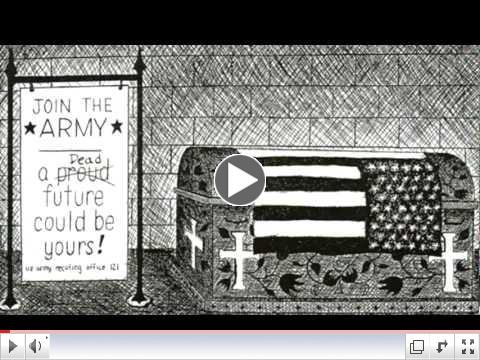 | | Shades of Justice Video: Bringing Down a President, Ending a War |
|
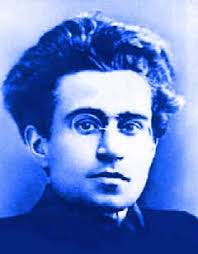 By Giuseppe Fiori
Verso, 30 pages
|

Essays on Mondragon, Marx, Gramsci
and the Green and Solidarity Economies |
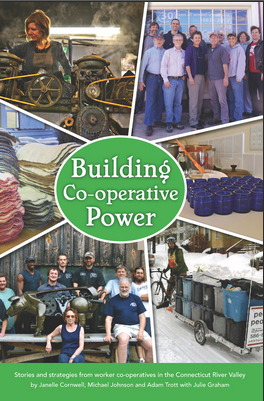
The Story of Workers Coops
in the Connecticut River
Valley Today.
Coauthors: Janelle Cornwell
(Worcester State University),
Michael Johnson (Grassroots
Economic Organizing Newsletter)
and Adam Trott (Valley Alliance
of Worker Co-operatives and
Collective Copies)
|
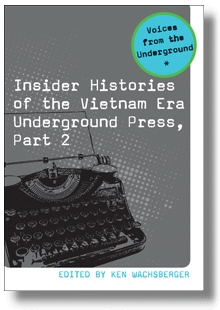
- Foreword by Susan Brownmiller
- Preface by Ken Wachsberger
$37.50 + $6 shipping
|
|
Discussion Documents for a Militant Movement
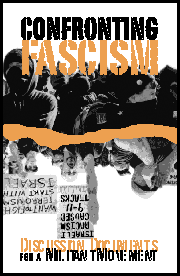
By Don Hamerquist
|
|
|
|
An Invitation to CCDSers and Friends...
 Class Struggle Class Struggle
in the 2014
Election Battles
We're the Committees of Correspondence for Democracy and Socialism...Do you have friends who should see this? Pass it on...Do you have a blog of your own? Others you love to read every day? Well, this is a place where you can share access to them with the rest of your comrades. Just pick your greatest hits for the week and send them to us at carld717@gmail.com! Most of all, it's urgent that you support low-wage workers, oppose militarized police, the war on Gaza, defend voter rights, plan for 2014 races now, oppose austerity, support the 'Moral Mondays' in North Carolina, the fight for the Green New Deal, a just immigration policy and the Congressional Progressive Caucus' 'Back to Work Budget'! We're doing more than ever, and have big plans. So pay your dues, make a donation and become a sustainer. Do it Now! Check the link at the bottom... |
Six States Where GOP Voter Suppression
Tactics Could Sway The Outcome

As another federal election cycle heads to a close, Jim Crow's ghost rises
By Steven Rosenfeld
Alternet
Oct 8, 2014 - Anyone who pays attention to American election knows that the Republican Party's favorite tactic to try on win on Election Day is to change the rules of who can vote and which ballots get counted.
This is what happened in presidential elections in Florida in 2000, in Ohio in 2004, and it is behind 2014's ongoing courtroom fights over allowing same-day voter registration, imposing tougher voter ID requirements, narrowing early voting options, and counting provisional ballots turned in at the wrong table, and on and on.
As 2014's campaigns enter its final stretch, federal and state courts are weighing in on a range of Republican-generated attempts to change the rules. These fights aren't yet over, so it is hard to say whether this will be an election where most of these tactics will be shown the door or sustained. Here are six states where voting rights have been in play:
1. Ohio. Last week, one day before early voting was to begin, the U.S. Supreme Court, voted 5-4 along its usual divide to uphold a cut in the early voting pushed by that state's Republican Secretary of State Jon Husted. While Ohio still has 28 days of early voting, its Republicans have long groused that on the very first weekend of that option Ohians could both register to vote-and cast ballots. That friendly window was closed by Ohio Republicans and locked shut by Supreme Court's conservative majority, all appointed by Republican presidents.
2. Kansas. As most political junkies know, a half-dozen of 2014's U.S. Senate races were already nail-biters over whether Democrats would lose their Senate majority before something surprising happened in Kansas. The Democrat in the race, Chad Taylor, dropped out, boosting Independent Greg Orman against incumbent Republican Sen. Pat Roberts. In response, the state's partisan Republican Secretary of State, Kris Kobach, went to court to force Democrats to name another candidate. A state court told Kobach to back off.
3. North Carolina. This state had some of the South's most progressive election laws until rightwingers took control of the Legislature and governor's office and this year rolled back the clock on voting rights. Those moves have been tied up in court, with a federal appeals court suspending two of the more insidious changes: ending same-day voter registration, and not counting ballots turned in at the wrong precinct, which could just be a different table in a high school gym. Late Wednesday afternoon, the U.S. Supreme Court overruled the Fourth Circuit's decision, meaning the GOP's new and restrictive rules will be in effect this fall.
4. Wisconsin. There are a handful of states where Republicans have used the myth of rampant voter fraud-one person voting many times-to impose tougher statewide ID requirements before getting a polling place ballot. Nevermind that this almost never happens, and if it does, whoever initials a poll book to get a ballot has essentially signed a confession for the cops. This tactic is intended to deter first-time voters, like students and poorer people, from voting, as they're seen by Republicans as supporting Democrats.
In Wisconsin, where the union-busting Republican Gov. Scott Walker is seeking a second term, the GOP has narrowed what forms of ID can be used to get a ballot. Voting rights groups have sued to block that, but a federal appeals court just deadlocked on whether to reconsider an earlier ruling that left the tougher ID law in place. That has pushed voting rights advocates to ask the U.S. Supreme Court to intervene. Its response is expected any day now. (Update: Court rules for the voters, see story below)
5. Arkansas. This is another state seen as determining whether the U.S. Senate will be held by Democrats or Republicans for the last two years of Obama's presidency. Here, too, the GOP-controlled state govermment imposed tougher voter ID standards, which were put on hold by a trial court. That state's Supreme Court recently heard arguments over whether suspending the new law was proper. ...(Click title for more)
|
|
By E.J. Dionne, Jr.
Truthdig.com
Oct. 9, 2014 - BURLINGTON, N.C.-The clergy gathered in the second-floor conference room at the First Baptist Church here were pondering whether this midterm election might be different from other midterm elections.
The five African-American pastors and bishops represented diverse theological traditions, but all were profoundly unhappy over what North Carolina's ultra-conservative state government in Raleigh had done to reduce access to the ballot box, cut education spending, and turn back money to expand Medicaid under the Affordable Care Act.
The irony, said the Rev. Dray Bland, pastor of First Baptist on Apple-the street location distinguishes it from the predominantly white First Baptist Church downtown-is that measures designed to make it harder for voters to cast ballots may actually inspire a larger number to do so.
"While many in Raleigh thought they could suppress the vote through these new voter laws, they may increase turnout by rallying the vote," Bland said. "The apathy we might have had has turned into action."
In the struggle for control of the U.S. Senate, the reaction against reaction has allowed Sen. Kay Hagan, so far at least, to defy the punditocracy. Once seen as one of this year's most vulnerable Democratic incumbents, Hagan has been maintaining a small but steady lead over state House Speaker Thom Tillis.
Tillis' problem is the sharp turn right in the governance of one of the South's traditionally moderate states that he helped engineer along with Gov. Pat McCrory. The governor doesn't face the voters this year, so it's Tillis who is reaping the whirlwind-particularly in a state that has been a pioneer in using good schools and world-class universities to build its economy.
"The edge that Kay Hagan has in this race, I believe, is attributable to the direction the state has taken and Thom Tillis' role in that," said Rep. David Price, D-N.C., whose district includes the Research Triangle area that typifies North Carolina's road to growth. "There are many things to be outraged about, but the most powerful is what the Republicans have done to public education, and to our teachers."
Rarely has a debate offered a better look at how two candidates view the political landscape than the encounter Tuesday night between Tillis and Hagan at the state's public television studios.
Tillis had one person on his mind. No matter what question host George Stephanopoulos asked, Tillis found a way to mention that Hagan had voted "96 percent" of the time with President Obama. He made 10 references to that number, and in case anybody missed it, mentioned it twice more at a news conference after the debate. Tillis is betting his campaign on disaffection with the president.
For her part, Hagan pointed out that while Obama is not on the ballot, Tillis is. Her calling card was Tillis' "extremism." She stayed on him for having "gutted education" and at times forced the speaker on the defensive. She also criticized Tillis for blocking the Medicaid expansion and for opposing, among other measures, the minimum wage, new equal pay laws, and student loan refinancing, even as he had favored "tax cuts for the wealthy."
Yet there is no way Hagan will let Tillis tag her as a "liberal." In the battle of statistics, she loves nothing better than to cite National Journal's 2013 Senate ratings that position her "smack dab in the middle, just like North Carolina," a phrase she used to open an interview on Wednesday. Indeed, the magazine's numbers had her at 49.3 percent liberal, 50.7 percent conservative.
Tillis' record and Hagan's own have allowed her to make the argument that Democrats would like to press nationwide: that today's Republican Party is far to the right of the country in its attitudes toward government's role, even on basic matters such as education.
And the very effort to make it harder for people to vote signals the importance of the franchise in a way that no amount of direct mail could. The Rev. William Barber II, whose "Moral Mondays" movement has mobilized opposition to the parade of right-wing policies out of Raleigh, said in an interview that voters in the state are ready to rise up against an approach designed to "make sure that it's easier to get a gun than to vote."
Should they do so, you wonder if Republicans will get the message: that even voters disappointed with President Obama are not ready to embrace a radical conservatism as the alternative....(Click title for more)
|

By Todd Richmond and Steve Karnowski
Huffington Post
Oct. 9, 2014 - MADISON, Wis. (AP) - The U.S. Supreme Court on Thursday blocked Wisconsin from implementing a law requiring voters to present photo IDs, overturning a lower court decision that would have put the law in place for the November election.
The 7th U.S. Circuit Court of Appeals declared the law constitutional on Monday. The following day, the American Civil Liberties Union and the Advancement Project filed an emergency request asking the Supreme Court to block the ruling.
On Thursday night the U.S. Supreme Court issued a one-page order that vacated the appeals court ruling pending further proceedings. Justices Samuel Alito, Antonin Scalia and Clarence Thomas dissented, saying the application should have been denied because there was no indication that the 7th Circuit had demonstrably erred.
"Obviously we're thrilled that people are going to be able to vote in this election," said Molly Collins, associate director for the ACLU of Wisconsin.
The ACLU, the Advancement Project and their allies now have 90 days to file a formal petition asking the Supreme Court to take up the case, Collins said, noting that the deadline lies well beyond Election Day so the law can't be reinstated by Nov. 4.
Attorney General J.B. Van Hollen defended the law.
"I believe the voter ID law is constitutional, and nothing in the Court's order suggests otherwise," he said in an emailed statement.
The dissenting justices raised concerns that absentee ballots had been sent with no notification of the need to present photo IDs - and that there was not enough time to address this issue before the November polls.
"We will be exploring alternatives to address the Court's concern and have voter ID on election day," Van Hollen said.
But opponents of the law were adamant that the decision removed the photo ID requirement.
All registered Wisconsin voters can cast ballots "regardless of whether or not they have a driver's license or other state-issued photo ID," Advancement Project Co-Director Penda D. Hair said in a statement.
Dale Ho, director of the ACLU's Voting Rights Project, said the order "puts the brakes on the last-minute disruption and voter chaos created by this law," that he said imperiled the vote for thousands of registered voters in Wisconsin.
The decision came on the same day that a federal court in Texas ruled in favor of the U.S. Justice Department's lawsuit against Texas's voter ID law. U.S. Attorney General Eric Holder welcomed both decisions.
|

Councilman Dennis Flores, D-2nd Ward, labor leader and precinct committeeman Joe Thayer and Lorain County AFL-CIO President Harry Williamson--part of a larger independent slate, these three did not run as Democrats.
By Amien Essif
In These Times
Oct. 8, 2014 - The relationship between the American labor movement and the Democratic Party has long been fairly predictable. For the better part of a century, labor has depended on the Democrats for favorable policy, and the Democrats have depended on labor for votes. Few from either side of the bargain anticipate an immediate future where that arrangement will be upset.
So when rumblings started coming out of Ohio late last year about breaking with the Democrats, many in the labor movement were startled. Last November, in the small county of Lorain, Ohio, local labor leaders who were intimately wedded to the Democratic establishment broke rank and supported three independent pro-labor candidates in county elections, all of whom won.
The act of rebellion in a union-dense county gained national attention as a story of labor flexing its muscles-and winning-against a Democratic establishment drifting rightward.
Considering Lorain along with the election of Seattle City Council member Kshama Sawant, the first socialist in decades to be elected to public office in a major American city, Jennifer Roesch wrote for Jacobin after last year's elections that "for the first time since 2000, there is a space opening up in mainstream politics to the left of the Democratic Party."
But just who or what will claim that space is still up for debate-especially in Lorain itself. Sawant's campaign, run by the Socialist Alternative party, insisted on the need for a national party for the working class and a break with the Democrats. Lorain, on the other hand, saw a small group of well-connected labor leaders organize an insurgency against local Democrats. And they did so without articulating a clear political vision, instead projecting mixed messages about building a political alternative in the city-at times intending to pull the Democrats left and then make amends, at times rejecting party politics altogether. And at still other times, they audaciously assumed the mantle of a new labor party movement.
The Lorain County Independent Labor Party
Lorain's rebellion began in April 2013, following a major clash with Democrats that March, according to Jim Slone, former UAW Local 2192 president who now serves as president of Lorain's UAW Community Action Program Council, the social justice arm of the union. For nearly three years, local unions had worked with the Lorain City Council and former mayor Anthony Krasienko to establish a project labor agreement (PLA), which finally passed in 2011, mandating that the city negotiate the terms of labor with the local Building and Construction Trades Council before taking bids from contractors to carry out public construction projects.
But in March 2013, newly elected Democratic Mayor Chase Ritenauer decided to scrap the PLA-a move that received praise from the National Right to Work Committee. To make matters worse, in April, as Russell Saltamontes notes, the city helped break a weeklong strike of around 200 garbage collectors represented by the Teamsters, with Mayor Ritenauer himself riding around in a truck with scabbing workers brought in from outside Ohio.
Ritenauer tells In These Times that for him, ditching the PLA was a practical decision, not an ideological one, and he sees himself as anything but anti-union. "Some people will back you, some people will back your opponent. ... I've got a lot of friends who are in a union, whether they're rank-and-file or whether they're part of leadership. I've got support in labor."
Slone sees it differently. "It was very clear that the mayor had his agenda, that he was going to try to tear labor apart, that he was going to try to destroy everything that we had worked to put into place," the UAW staffer says.
The repeal of the PLA and the failure of the garbage collectors' strike were the last two straws for labor. In April, union leaders Jim Slone; Harry Williamson, president of the Lorain County AFL-CIO; and Joe Thayer, the local federation's former president; decided to end their cooperation with the Democratic Party and find favorable independent candidates to back in Lorain County elections. And fast-City Council and County Commission races were only six months away.
Over a series of meetings and innumerable phone calls, the "core group," as Williamson puts it, helped launch the campaign of Joshua Thornsberry, a school teacher, who would run as an independent for Lorain City Council. Greg Argenti, the owner of an auto body shop who had already decided to run as independent would soon get the full backing of labor to claim a seat on the same council. And Mark F. Craig, independent city councilor in Elyria, Ohio, would get a similar endorsement (though he had been serving as an independent since 2008). They drew support from over a dozen union locals in addition to those associated with the Lorain County AFL-CIO, which took the helm of the operation.
Although labor still pledged to endorse three of the Democratic city councilors up for election in Lorain, the independent campaigns angered many in the party. In September, Williamson and Thayer received an unexpected letter, signed by Paul Adams, chairman of the City Democratic Party of Lorain, Ohio, stating that if they did not rescind their support for independents and back only Democratic candidates within 10 days, they would not be allowed to attend party meetings....(Click title for more)
|
Kentucky: White Poverty Exists, and It's Ignored

Samuel Riley, right, stops at the Valero gas station after getting off work as a mechanic to buy some cigarettes from Roger Baker in Booneville, Ky. Wednesday August 6, 2014. Booneville and Owsley County are statistically one of the poorest in the country, but many of it's residents find it a good place to live unless you are young and looking for a job. By Leonard Pitts, Jr
Miami Herald
Oct,5, 2014 - BOONEVILLE, KY In a small office on the first floor of the Owsley County Court House, across the street from the Hometown Cafe, Johnny Logsdon, chief of the two-man police department, is talking with a reporter about life in this town of 82 people in the hills of eastern Kentucky.
Logsdon keeps his answers short. He acknowledges that drug use - methamphetamine, mostly - is a problem here, but insists it's about the same as you'd find anywhere. He is much more interested in describing the department's policy of free motorist assistance. "If they lock themselves out of their cars, we provide a service; we unlock it for them. Away from here, they charge $60 to $100. We just do it for free as a community service."
It's not that he is unfriendly, but there is something guarded about him, something that is constantly taking your measure. People here, he explains, have been burned before by media.
Indeed, people here are still talking about the story the New York Times ran in June declaring neighboring Clay County "the hardest place in America to live." Which was positively complimentary compared to a piece the National Review ran six months before, declaring Owsley "The White Ghetto." Reporter Kevin D. Williamson wrote that instead of contemplating their bleak reality, the people here escape it with "the pills and the dope, the morning beers, the endless scratch-off lotto cards, healing meetings up on the hill, the federally funded ritual of trading cases of food-stamp Pepsi for packs of Kentucky's Best cigarettes and good old hard currency, tall piles of gas station nachos, the occasional blast of meth, Narcotics Anonymous meetings, petty crime, the draw, the recreational making and surgical unmaking of teenaged mothers, and death ..."
"You've got to understand," says Logsdon, "people shy away from reporters." Sure enough, a worker at the Family Dollar store doesn't want her name used. A woman at a medical conference in Hazard warns everyone in earshot in a loud voice that a reporter is among them. So it goes during a week spent wandering this county and adjacent counties discussing something America almost never talks about: white poverty.
Granted, America seldom discusses poverty of any hue, except insofar as conservative pundits and politicians use it as a not-subtle proxy for racial resentments among white voters. But white poverty is the great white whale of American social discourse, believed to exist but seldom seen.
As it turns out, our deeply racialized view of poverty bears no resemblance to reality. Though it's true that African Americans are disproportionately likely to live below the poverty line, it is also true that the vast majority of those in poverty are white: 29.8 million people. In fact, there are more white poor than all other poor combined.
Owsley County (Booneville is the county seat) is the epicenter of that poverty. Median income here is less than $20,000. The obesity rate is 50 percent. Life expectancy: 71.4 years, more than seven years below the national average. With 36 percent of its citizens living below the poverty line and 98.5 percent of its population identifying as white, it is the poorest - and one of the whitest - places in America.
If people are wary of reporters asking about such things, it's not difficult to understand. You get sick of being defined as a problem. Still, nobody denies there are problems here. Indeed, walk down Court Street talking to whomever will speak to you, and very quickly, a theme emerges:
There is nothing here....(Click title for more)
|
|
Students of the Instituto Politécnico Nacional are shown marching on Friday, September 30. 2014. They took over part of this highway, known as Circuito Interior, en route to various government buildings. Photo by Luis Ramírez Tamayo.
By Johnny Hazard
The Rag Blog
Oct. 8, 2014 - MEXICO CITY - By now many in the U.S. and most in Mexico have seen the evidence of what we feared: Mass graves were discovered Saturday that appear to contain the bodies of almost half of the about 50 education students murdered or "disappeared" since September 26 in Iguala, Guerrero.
Most were students of a "rural normal," a teacher preparation school in Tixtla, Guerrero, in southwest Mexico. (Acapulco, Zihuatanejo, and Ixtapa are famous places in Guerrero, but the state as a whole is one of the poorest places in Latin America and was home to two major guerrilla movements in the 1970s.)
Evidence strongly suggests the participation of the mayor and police in the massacre.
Evidence strongly suggests the participation of the mayor and police in the massacre. The mayor, Juan Carlos Abarca Velázquez, was elected as an "external candidate" of the Partido de la Revolución Democrática, which was founded as a social democratic and populist party by Cuauhtémoc Cárdenas, Andrés Manuel López Obrador, and others in 1988 and now appears to have been corrupted to this extreme.
The current governor of Guerrero (Ángel Aguirre, who looked for the PRD when his party, the dominant PRI, wouldn't nominate him) and mayor of Mexico City (restaurant chain owner and former police chief Miguel Ángel Mancera) are also right-wing non-members of the PRD who were elected vía the party (though they may not be complicit in these murderers).
The mayor of Iguala asked for a 30-day leave, ostensibly to get out of the way of the investigation or to prepare his defense. Most city council members lauded him and gave him a lavish farewell. Many in the state and national PRD seek to scapegoat him; others, including the newly elected president of the party, Carlos Navarrete, go as far as to defend him.
The students' enemies are government promoters of education 'reform,' not
dope dealers.
There's a lot of talk about the mayor's ties to drug gangs and investigators lean toward theories of gang control of the police force and their having ordered the kidnapping and execution of the students. This makes no sense; the students' enemies are government promoters of education "reform," not dope dealers.
Other commentators maintain that the state government had already taken some control over the city police and thus may have had direct participation in the atrocities committed. The police chief - it is not clear whether he has been replaced - is a nephew of Felix Salgado, an eccentric PRD politician and former mayor of Acapulco.
While students of the normal in Ayotzinapa, near Tixtla, do often engage in very militant protests, they were in Iguala to attend a football (soccer) tournament and raise money there for various projects, including their transportation to the annual October 2 march in Mexico City that commemorates another massacre, that of hundreds of students and bystanders in 1968....(Click title for more)
|
By Jamie Doward
The Guardian via Portside
Sept 20, 2014 - He is one of the central characters in Pride, the feelgood film now in cinemas [1] that tells how gay and lesbian activists threw their support behind a Welsh mining community during the strike of 1984.
But while many of those who inspired the film attended its recent premiere, Mark Ashton was absent. He died in 1987 of an Aids-related illness at the age of just 26. But now the film has sparked a surge of interest in his political activism. A memorial fund in his memory [2]has received donations of more than £10,000 since the film's release this month.
"He was an everything person," said his friend Chris Birch. "He was an Irishman, a communist, an agitator, a lapsed Catholic who still went to mass very occasionally. He was very charismatic. His communism governed everything he did. He spent a couple of months in Bangladesh in '82 and the poverty really politicised him. I miss him terribly. People tell me I didn't smile for three months after he died."
Pride [3], which features a cast including Bill Nighy, Imelda Staunton and Paddy Considine, tells how Ashton co-founded Lesbians and Gays Support the Miners (LGSM), a movement that raised tens of thousands of pounds for striking miners, the two sides finding solidarity in their enmity towards Thatcherism and shared feelings of alienation.
Their collective sense of marginalisation was captured in a notorious Sun headline that branded the two groups "Pits and Perverts", an epithet that the paper's targets gleefully appropriated for a memorable fundraising concert at Camden's Electric Ballroom.
Pride shows how disparate groups of gay and lesbian people were inspired by Ashton, a gay man from Portrush in County Antrim, who was an active member of the Young Communist League, a fact overlooked in the film, apparently so as not to alienate American audiences.
With a soundtrack that features the Smiths and Billy Bragg, the uplifting film is in the mould of Billy Elliot, Brassed Off and The Full Monty. But it is only when the credits roll that viewers learn the fate of Ashton, to whom the Communards' Jimmy Somerville paid tribute in his song, For a Friend. "I´ll never let you down, a battle I have found," Somerville sings. "And all the dreams we had, I will carry on."
Roy James, a member of LGSM and a friend of Ashton, blames his early death on the lack of resources that went into combating HIV in the 80s.
"Aids was a key political issue, alongside Greenham Common, the women's movement, CND and Cruise missiles," James said.
"People were sick and dying and nothing was being done about it. In the film we're depicted as good, fluffy people supporting the miners but there was a clear strategy on Mark's part to align himself with the labour movement in order to get gay politics, sexual liberation, HIV and Aids treatment on to the political agenda."...(Click title for more)
|
Click on picture for video
By Pallab Ghosh
Science correspondent, BBC News
Scientists have identified some of the earliest cave paintings produced by humans.
The artworks are in a rural area on the Indonesian Island of Sulawesi.
Until now, paintings this old had been confirmed in caves only in Western Europe.
Researchers tell the journal Nature that the Indonesian discovery transforms ideas about how humans first developed the ability to produce art.
Australian and Indonesian scientists have dated layers of stalactite-like growths that have formed over coloured outlines of human hands.
Early artists made them by carefully blowing paint around hands that were pressed tightly against the cave walls and ceilings. The oldest is at least 40,000 years old.
There are also human figures, and pictures of wild hoofed animals that are found only on the island. Dr Maxime Aubert, of Griffith University in Queensland, Australia, who dated the paintings found in Maros in Southern Sulawesi, explained that one of them (shown immediately below) was probably the earliest of its type.
Oldest Art At the top of the worn painting is a faint outline of a human hand. Below it is possibly the earliest depiction of an animal
"The minimum age for (the outline of the hand) is 39,900 years old, which makes it the oldest hand stencil in the world," said Dr Aubert.
This find enables us to get away from this Euro-centric view of a creative explosion that was special to Europe"
"Next to it is a pig that has a minimum age of 35,400 years old, and this is one of the oldest figurative depictions in the world, if not the oldest one," he told BBC News.
There are also paintings in the caves that are around 27,000 years old, which means that the inhabitants were painting for at least 13,000 years.
In addition, there are paintings in a cave in the regency of Bone, 100 km north of Maros. These cannot be dated because the stalactite-like growths used to determine the age of the art do not occur. But the researchers believe that they are probably the same age as the paintings in Maros because they are stylistically identical.
The discovery of the Indonesian cave art is important because it shows the beginnings of human intelligence as we understand it today.
Truly human
Art and the ability to think of abstract concepts is what distinguishes our species from other animals - capabilities that also led us to use fire, develop the wheel and come up with the other technologies that have made our kind so successful.
Its emergence, therefore, marks one of the key moments when our species became truly human. ...(Click title for more)
|
|
Keep up with the Moral Mondays with a Red Resolution...
Become a CCDS member today!
 The time is long past for 'Lone Rangers'. Being a socialist by your self is no fun and doesn't help much. Join CCDS today--$36 regular, $48 household and $18 youth. The time is long past for 'Lone Rangers'. Being a socialist by your self is no fun and doesn't help much. Join CCDS today--$36 regular, $48 household and $18 youth.
Better yet, beome a sustainer at $20 per month, and we'll send you a copy of Jack O'Dell's new book, 'Climbing Jacobs Ladder,' drawing on the lessons of the movement in the South in the 1950s and 1960s.
Solidarity, Carl Davidson, CCDS
|
|
|